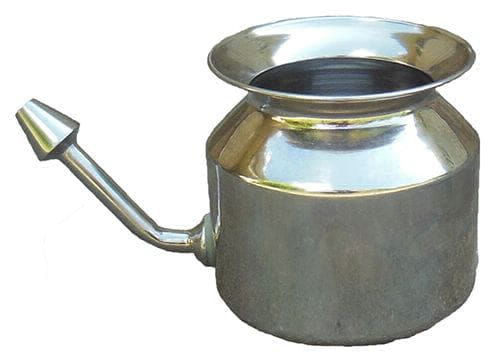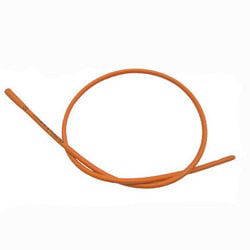Practice

Jala and Sutra Neti
Jala Neti
This Practice should be preformed in the morning with other Shuddhi practices or purification practices and also known as cleanses. This practice cleans the nasal passages making the practice of Pranayama easier as well as normal breathing.
Before you start you need to find out which nostril is more open. To do this, first plug one nostril and inhale through the open nostril. Then plug the other nostril and inhale through the open nostril. If one nostril is more open, then start with that nostril, if both nostrils are equally open, then start with any nostril.
Practice

Sutra Neti
With this practice, you will need a rubber catheter which can be purchased at a local medical supply store or website. We suggest using a rubber catheter over the traditional use of a cotton thread, because of the time and effort needed to prepare the cotton thread when there is an easier and cleaner way to preform Sutra Neti.
Many people suffer from a mild case of a deviated septum which is harmless. In the case of an acute deviated septum, it may be difficult inserting a rubber catheter into the nasal passage. Many people have mild nasal septal deviations, which is more or less harmless. If the deviation is acute then one may feel a block while inserting the rubber tube. Seek expert guidance in such cases.
Practice

Neti Pot
Sutra Neti
The six cleansing actions are intended to be the start of a Yoga practice in order to clean, strengthen, remove toxins and improve the flow of Prana through out the practitioner.
Yoga poses help to elongate and strengthen the muscles of the body as well as to calm the mind for the deeper spiritual practices of Yoga.
Breathing exercises are a great practice to remove carbon dioxide, increase lung capacity as well as being a good preparatory practice for the deepest spiritual practice of Yoga, Meditation.
The four body locks that makes up this practice give the practitioner the ability to hold or lock Prana in certain locations of the body. These practices also allow the practitioner to release blockages that may be holding the practitioner back.
The gestures in this practice include the whole body and are intended to awaken Prana, Chakras as well as Kundalini energy within the practitioner.
Meditation is the highest spiritual practice of Yoga which is why this practice is the most difficult practice to preform, but with correct knowledge and dedication, can be the most profound practice of Yoga.